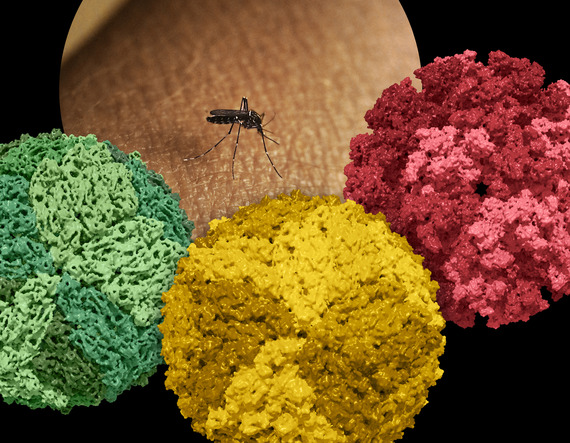| Thursday, June 6, 2024  An Aedes mosquito is shown with colorized 3D renderings of dengue (green), zika (yellow), and chikungunya (red) virus capsids. Renderings based on x-ray crystallography data. (NIAID) NIAID scientists and colleagues have identified dengue, Zika and chikungunya viruses in the West African country of Mali, where health care providers likely misdiagnose patients with illness from those viruses due to unavailable diagnostic tools. Because malaria is the most common fever-causing illness in rural sub-Saharan Africa, most medical workers presume patients with a fever have malaria. The primary cause of all four infectious diseases is a mosquito bite. A new study from NIAID's Rocky Mountain Laboratories and the University of Sciences, Techniques and Technologies in Mali aims to help spread information to medical workers about the existence of the additional viral diseases. Ideally, circulating the information will help them obtain the necessary diagnostics. The study, published in The American Journal of Tropical Medicine and Hygiene, involved 600 residents from three Malian communities. The scientists detected antibodies to dengue virus in the blood of 77.2% of the residents tested; to Zika virus in 31.2%, and to chikungunya virus in 25.8%. They detected at least one of the three viruses in 84.9% of participants, meaning just 15.1% tested negative to any of the three viruses. Evidence of the parasites that cause malaria was found in 44.5% of those tested. National Institute of Allergy and Infectious Diseases | National Institutes of Health | | | |




No comments:
Post a Comment